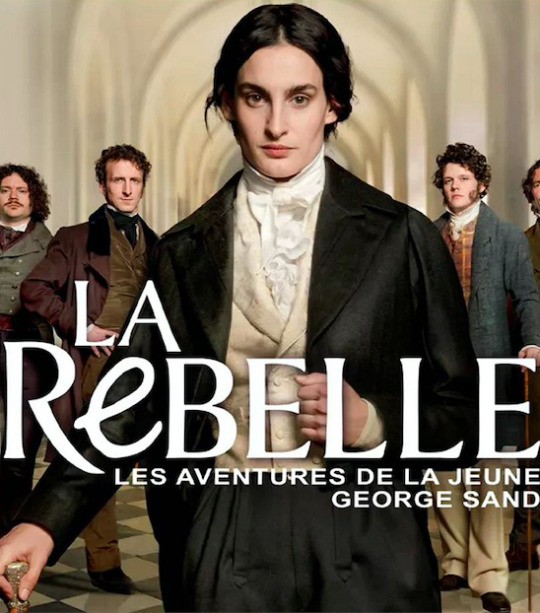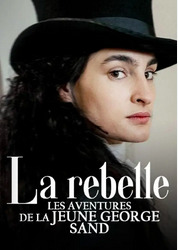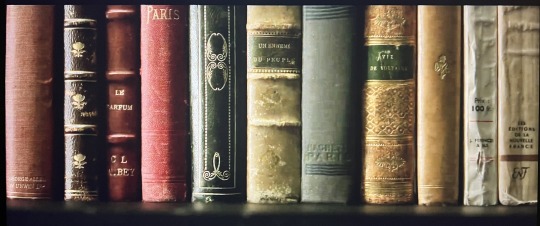#Fougeron
Explore tagged Tumblr posts
Text



“La Rebelle : les Aventures de la Jeune George Sand” mini-série de Rodolphe Tissot avec Nine d'Urso, Aymeric Fougeron, Oscar Lesage, Yoann Blanc, Barbara Pravi, Louisiane Gouverneur, Vincent Londez, Megan Northam, Astrid Whettnall, Jonathan Turnbull, Grégoire Oestermann, Jonas Wertz, Marie Oppert, David Kammenos, Fabrizio Rongione, Philippe Torreton, Jacques Bonnaffé, Anton Csaszar, Lorenzo Lefebvre, Émilien Diard-Detoeuf, Louis Berthelemy, Mickaël Lumière et les jeunes Oscar Tresanini et Sasha Lemaitre Crémaschi, mars 2025.
#films#FilmsArtistes#biopic#hommage#books#spirit#DUrso#Lesage#Pravi#Northam#Torreton#Rongione#Sand#Dudevant#Merimee#Musset#Sandeau#DeBourges#Balzac#Dumas#Dorval#Beaumont#Duvernet#SainteBeuve#Vigny#Dupin#DeLatouche#Renault#Tissot#Fougeron
2 notes
·
View notes
Photo





Fougeron Architecture designed Wavelet House in Los Altos, California -- via ArchDaily
7 notes
·
View notes
Text

Suspension House by Anne Fougeron
spanning the rocky banks of a Californian Creek
ph. Joe Fletcher
4 notes
·
View notes
Photo







“Cut Out House,” San Francisco, California,
Anne Fougeron architect
#art#design#architecture#interiors#san francisco#california#stairway#stairwell#staircase#anne fougeron#sculpture#stairsdesign#staircasedesign#stairs
27 notes
·
View notes
Text

André Fougeron (French, 1913–1998)
24 notes
·
View notes
Text
IWTV Season 2 Sources & References
Season 1 here (these lists are updated regularly)
Season 3 here
Cited by the Writer’s Room/Cast:
The Ethnic Avante-Garde: Minority Cultures and World Revolution (Modernist Latitudes) by Steven S. Lee
Paris Journal 1944-1955 by Janet Flanner (Genet)
The Vampire: A Casebook by Alan Dundes
Horizontal Collaborators: The Erotic World of Paris, 1920-1946 by Mel Gordon
The Sexual Outlaw: A Documentary: A Non-Fiction Account, with Commentaries, of Three Days and Nights in the Sexual Underground by John Rechy
Banjo: A Story Without a Plot by Claude McKay
Pour Que Paris Soit by Elsa Triolet and Robert Doisneau
Anne Rice’s Vampire Chronicles: An Alphabettery
The Fly cited by Jacob Anderson
King Lear by Shakespeare cited by Rolin Jones
The Third Man (1949) cited by Levan Akin
An American in Paris by George Gershwin (1928) cited by Daniel Hart
Giovanni’s Room cited by Jacob Anderson
Works directly referenced:
Melmoth the Wanderer by Charles Maturin
Sebastien Melmoth by Oscar Wilde
Ode to a Nightingale by Keats
Amadeus (1984)
The Lost Boys (1987)
Gaslight (1944)
Batman
Casablanca (1942)
Now, Voyager (1942)
Moulin Rouge (2001)
The Phantom of the Opera
Les Vampires (1915)
Dracula (1931) credit to @vampchronicles_ on twt
Le Triomphe de L’amour by Pierre de Marivaux
Existentialism is a Humanism by Jean Paul Sartre
Les Liaisons Dangereuses by Pierre Choderlos de Laclos
Romeo and Juliet by William Shakespeare
How to Win Friends and Influence People by Dale Carnegie
Hamlet by William Shakespeare
Vampire’s Kiss (1988) credit to @talesfromthecrypts
Les Morts ont tous le Meme Peau by Boris Vian credit to @greedandenby
The Most Dangerous Game by Richard Connell
Waiting for Godot by Samuel Barclay Beckett credit to @rorscachisgay on twt
An Enemy of the People by Ibsen
Anna Karenina by Leo Tolstoy
Vie de Voltaire by Marquis Condorcet
Simone de Beauvoir: A Critical Introduction by Edward Fullbrook and Kate Fullbrook credit to @iwtvfanevents
Nightwood by Djuna Barnes credit to @iwtvfanevents
Beloved by Toni Morrison
The Blacks by Jean Genet
The Books that Shaped Art History: From Gombrich and Greenberg to Alpers and Krauss by Richard Shone and Jean-Paul Stonard
A Brief History of Time by Stephen Hawking (10th anniversary edition)
Artists, Art, and Salons:
R-26
Palma Vecchio
Andre Fougeron
Elsa Triollet
Fred Stein
Lisette Model
Gordon Parks
Miguel Barcelo
Taxidermied Javelina by Chris Roberts-Antieau
Ai WeiWei (wallpaper)
David Hockney (Lemons)
Wols
The Kiss of Judas by Jakob Smits
Salome by Louis Icart
Ophelia by John Everett Millais
Shelter by Peter Macon
The Kiss by Edvard Munch
The Vampire or Love and Pain by Edvard Munch credit @iwtvasart
Ruiter on Horse by Reiger Stolk credit @ iwtvasart
Portrait of Frank Burty Haviland by Modigliani credit @iwtvasart
Self-Seers II (Death and Man) by Egon Schiele credit to @90sgreggaraki
The Sleep of Reason Produces Monsters by Goya
Aicha by Felix Vallotton
Cariatide by Modigliani
Nature Morte Au Pain Et Au Cocteau by Louis Marcoussis
Untitled by Julio Gonzalez
Embrace by Mikulas Galanda
Trees on a Mountain Slope by Ernst Kirchner
Landscape Paris by Henry Lyman Sayen
Tabac 56 by Oscar Garcia
Spirituals by Lillian Richter Reynolds
The Girl from Polesie by Konrad Krzyzanowski
Woman in Red Blouse With Tulips by William James Glackens
Piles of French Novels by Vincent Van Gogh
Movie & Play Posters on set (in chronological order by year):
Tarzan and his Mate (1934)
Avec le Sourire (1936)
Les Deux Gosses (1936)
Le Jour Se Leve (1939) about a man who commits murder as a result of a love triangle and locks himself in his apartment recounting the details as the police attempt to arrest him. Credit to @laisofhyccara
Nuit de Décembre (1940)
Mademoiselle Swing (1942) about a girl who follows a troupe of swing musicians to Paris.
Les Enfents du Paradis (1945) about a woman with many suitors including an actor and an aristocrat.
Fantomas (1946) about a sadistic criminal mastermind. This version includes a hideout in the catacombs where he traps people.
Quai des Orfevres (1947) watch here
Monsieur Vincent (1947)
Le Cafe du Cadran (1947) about a wife’s affair with a violinist.
La Kermesse Rouge (1947) film about a jealous artist who locks up his younger wife and a fire breaks out while she’s trapped.
Morts Sans Sepulture by Jean-Paul Sartre (play) also published in English translations as “The Victors” or “Men Without Shadows” about resistance fighters captured by Vichy soldiers struggling not to give up information.
Mon Faust by Paul Valery (play)
Musical Influences: @greedandenby collected all music used in Season 2 here.
Henry Cowell
Meredith Monk
Howling’ Wolf
Shirley Temple
Jason Lindner Big Band
The Teeth
Carlos Salzedo
Alice Coltrane
Thelonius Monk
David Lang
Caroline Shaw
Gadfly by Shostakovich (for Raglan James)
musical career of Martha Argerich

#iwtv#season 2#given that the posters are starting to come out of Prague I decided to start compiling sources and references in one place#Set design#production design#iwtv art
320 notes
·
View notes
Photo

André Fougeron (French, 1913–1998).
44 notes
·
View notes
Text

MWW Artwork of the Day (8/1/23) André Fougeron (French, 1913–1998) Atlantic Civilisation (1953) Oil on canvas, 380 x 559 cm. The Tate Gallery, London
"Atlantic Civilisation" is Fougeron's key work of social criticism and an extraordinary example of Cold War rhetoric. Fougeron caricatures the Americanisation of Europe, then a major target of Communist Party propaganda. At more than five and a half metres wide, "Atlantic Civilisation" was a self-consciously grand gesture with which Fougeron was inextricably identified after it was shown at the Salon d'Automne in Paris in November 1953. In contrast to the relative precision of smaller works, such as the 1953 "Return from the Market," Fougeron used a simplifying style that deliberately plays on the comic-strip culture it attacks.
14 notes
·
View notes
Text

Sakiet Sidi Youssef is a town and commune in the Kef Governorate, Tunisia, near the border with Algeria.
On 8 February 1958, it was bombarded by French forces in the belief that it was serving as a refuge for Algerian independence fighters. About 20 French bombers and fighters attacked causing at least 70 deaths and 130 wounded. This event sparked an international outcry and helped precipitate the end of the Algerian War…
Please follow link for full post
Sakiet,Zaidan,Paintings,Arthistory,Biography,History,fineart,Artists,footnotes,André Fougeron,
01 Painting, The art of War, André Fougeron's Massacre at Sakiet, with footnotes
2 notes
·
View notes
Text

Aymeric Fougeron et Nine d'Urso dans “La Rebelle : les Aventures de la Jeune George Sand” mini-série de Rodolphe Tissot, mars 2025.
1 note
·
View note
Photo





Fougeron Architecture has shared photos of a home they remodelled that’s suspended between two California hills, and spans a creek, and boasts a waterfall in the backyard -- via Contemporist
2 notes
·
View notes
Text

André Fougeron - Civilisation atlantique, 1953
1 note
·
View note
Text
Calls, SpeakVar Workshop: A workshop on Intraspeaker and interspeaker variability in the context of speaker identification
2nd Call for Papers: Second call, extended deadline The Speech Variability Project Group and the Hungarian Research Centre for Linguistics invite you to participate in the Intraspeaker and interspeaker variability Workshop. The keynote speakers of the workshop are: Cécile Fougeron and Kirsty McDougall. Applications for the SpeakVar workshop can be administered via EasyChair by uploading 2+1 pages abstracts. Submission deadline: July 23, 2023. Workshop dates: October 2‒4, 2023. The first two http://dlvr.it/Ss0NR1
0 notes


